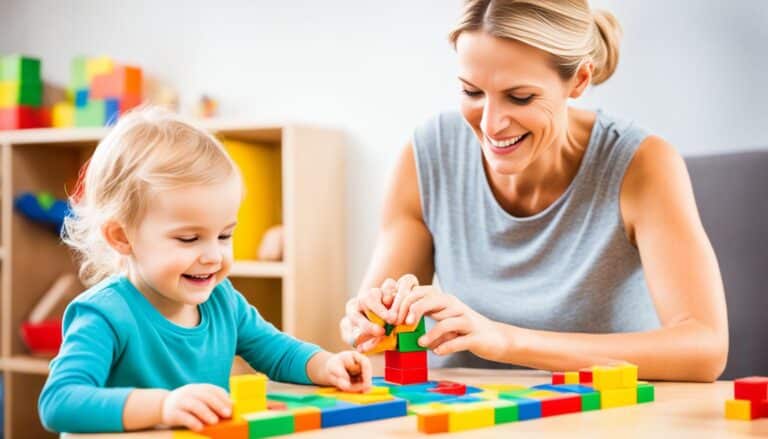Embracing Diversity: How Alternative Family Structures Shape Our Society
In today’s society, alternative family structures are becoming increasingly prevalent, reshaping the traditional idea of a nuclear family. These alternative structures, including single-parent households, blended families, and same-sex families, contribute to the diversity and richness of our communities. As we embrace these different family dynamics, we recognize the profound impact they have on shaping our society.
Research has shown that children raised in alternative family structures can thrive and experience positive outcomes in various aspects of their lives. They demonstrate remarkable achievements in education, maintain emotional well-being, and flourish in their social development. By acknowledging and accepting different family structures, we create a more inclusive and tolerant society where individuals from all backgrounds feel a sense of belonging.
Key Takeaways:
- Alternative family structures, such as single-parent households and same-sex families, are increasingly common in our society.
- Children raised in alternative family structures exhibit positive outcomes in education, emotional well-being, and social development.
- Embracing different family structures fosters inclusiveness and tolerance.
- Alternative families provide children with multiple role models and a broader support network.
- Education, awareness, and media representation play key roles in promoting acceptance of diverse family structures.
The Benefits of Alternative Family Structures
Alternative family structures offer numerous advantages that contribute to the positive outcomes and well-being of children. By embracing diverse family structures, we unlock unique opportunities for personal growth and development.
Multiple Role Models and a Broader Support Network
One of the key benefits of alternative families is that they provide children with multiple role models and a broader support network. In these families, children have the opportunity to learn from and be influenced by a diverse range of individuals. Whether it’s a single parent, step-parent, grandparent, or same-sex parent, each person brings their own experiences, perspectives, and strengths into the child’s life. This exposure to different role models fosters adaptability, empathy, and a deeper understanding of the world around them.
Same-Sex Families: Comparable Levels of Well-being
Research consistently shows that children raised in same-sex families have similar levels of well-being and adjustment as those raised in heterosexual families. Numerous studies have debunked stereotypes and confirmed that the sexual orientation of parents has no bearing on a child’s happiness, mental health, or social development. These findings highlight the inclusivity of alternative family structures and emphasize the importance of supporting and celebrating same-sex families.
Blended Families: Developing Resilience
Blended families, where two separate families come together, present unique opportunities for children to develop resilience and adaptability. These families navigate the complex dynamics of merging households, creating a supportive environment that fosters open communication, compromise, and understanding. As children navigate the adjustments and changes within a blended family, they develop vital skills for future challenges and learn the value of flexibility and cooperation.
Single-Parent Households: Strong Bond and Independence
Single-parent households can offer a strong bond between parent and child, leading to greater independence and self-confidence. With the undivided attention and support of one parent, children in single-parent households often cultivate a deep sense of trust, resilience, and self-reliance. They learn to take responsibility for their own well-being, make decisions autonomously, and develop a strong sense of identity. These valuable life skills prepare them to face the world with confidence.
Alternative family structures bring unique benefits that contribute to the holistic development of children. By embracing and celebrating the diversity of family structures, we create inclusive communities that honor and support every individual.

Promoting Acceptance and Understanding
Educating ourselves and raising awareness is key to fostering acceptance of different family structures in our society. By understanding and appreciating the diversity in families, we can ensure that everyone feels valued and respected.
Schools and community organizations play a vital role in promoting acceptance by implementing inclusive policies and programs that recognize and celebrate different family structures. Through education, children learn the importance of embracing diversity and understanding that families come in many forms.
Media representation of alternative family structures also plays a significant role in breaking down stereotypes and promoting understanding. When we see diverse families represented in movies, TV shows, and other forms of media, it helps normalize and validate their existence. This representation challenges preconceived notions and encourages a more inclusive society.
When we embrace and support diverse family structures, we create a society where everyone feels welcomed and accepted for who they are. By promoting diversity in families and fostering acceptance of different family structures, we can build a community that values and celebrates the uniqueness of every individual.
FAQ
What are alternative family structures?
Alternative family structures include single-parent households, blended families (where two separate families come together), and same-sex families.
What are the benefits of alternative family structures?
Alternative family structures bring diversity and a wealth of perspectives to our communities. Research has shown that children raised in alternative family structures can thrive and have positive outcomes in areas such as education, emotional well-being, and social development.
How do alternative family structures contribute to our society?
By embracing and accepting different family structures, our society becomes more inclusive and tolerant, fostering a sense of belonging for all individuals. Alternative family structures provide children with multiple role models and a broader support network.
How do same-sex families compare to heterosexual families?
Research has consistently shown that children in same-sex families have similar levels of well-being and adjustment as those in heterosexual families.
What benefits do blended families offer?
Blended families offer the opportunity for children to develop resilience and adaptability as two separate families come together.
What advantages do single-parent households provide?
Single-parent households can foster a strong bond between parent and child, leading to greater independence and self-confidence.
How can we promote acceptance of different family structures?
Education and awareness play a crucial role in promoting acceptance of different family structures. Schools and community organizations can implement inclusive policies and programs that recognize and celebrate diversity in families.
How can media representation contribute to understanding diverse family structures?
Media representation of alternative family structures can contribute to breaking down stereotypes and promoting understanding.
Why is it important to embrace and support diverse family structures?
By embracing and supporting diverse family structures, we create a society where everyone feels valued and accepted.
Source Links
- https://www.kxan.com/news/local/travis-county/downtown-austin-safety-solutions-discussed-in-travis-county-da-race/
- https://www.compositesworld.com/products/composites-association-demonstrates-composites-circularity
- https://www.compositesworld.com/news/sigmatex-achieves-iso-certifications-for-uk-operations






